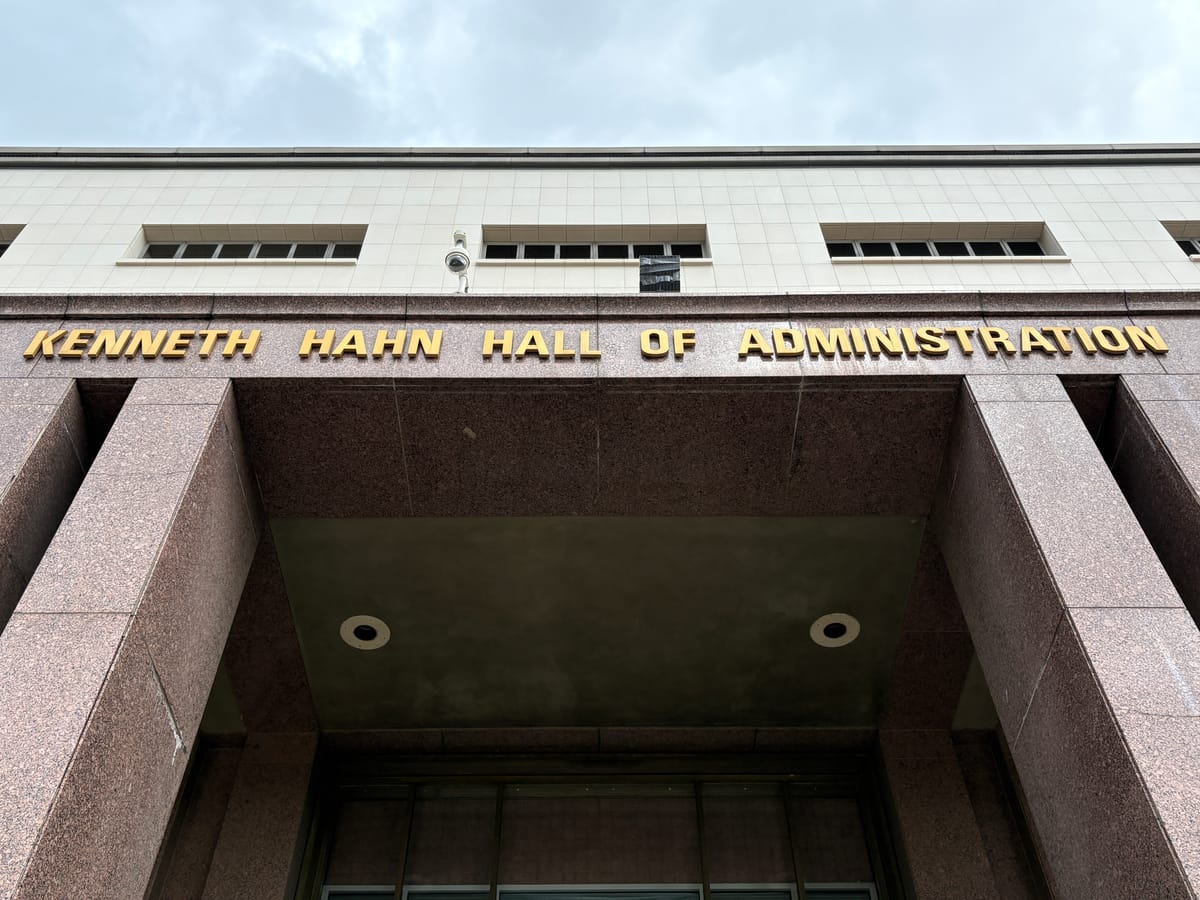Patricia Escárcega is a journalist based in Los Angeles. Her writing has appeared in The New York Times, Playboy, The Washington Post and other outlets. She has worked as a restaurant critic for the Los Angeles Times and Phoenix New Times, and as a reporter for the Arizona Republic.
Los Angeles, which lights up its city hall in rainbow colors for Pride month and trumpets itself as a refuge for immigrants and oppressed communities, might soon lose what may be its oldest continuously operating gay bar. Absent emergency action from City Hall, the Silver Platter's closure would add to L.A.'s painful history of displacing communities of color.
"Losing the bar really hurts," Criss Quintanilla told me this week. A native of Honduras and trans woman, Quintanilla is a regular who discovered the bar about six years ago, on her third day in the U.S. She drops by "two or three times a week" to socialize, attending the bar's various annual events, including Thanksgiving dinner and a popular Nochebuena (Christmas Eve) party, featuring the owner's signature home-cooked ribs.
"It's such a lovely, peaceful place. We're family there," said Quintanilla. "This is a hard blow."
It didn't have to end this way. The Silver Platter, situated on the corner of 7th Street and Rampart Boulevard near MacArthur Park in Westlake, is home to more than six decades of queer Latino immigrant culture in Los Angeles. That’s worth saving, and City Councilmember Eunisses Hernandez, who represents the area and last week co-introduced a resolution to designate November "Transgender Awareness Month" in Los Angeles – vowing to uplift the "resilience, contributions and history of the transgender community" – should do what she can to keep the Silver Platter open.
But if things go as planned, the bar, originally slated for permanent closure at the end of the month, will close by March 1, 2026, said Martha Vasquez, daughter of owner Margarita Xatruch. In its place, developer Roussin Capital Group plans to build a 55-unit mixed-use development project, of which a paltry six units have been set aside for low-income housing.

Opened in 1963 by Rogelio Ramirez, a Mexican immigrant, the Silver Platter started out as a hangout for gay Latino men in "Tejano boots and leather jackets," his brother Gonzalo recalled in artist Wu Tsang's 2012 documentary, "Wildness.” (In the 2010s, Xatruch, a longtime bar employee, took over as owner.) The film documented the bar's evolution in the 1990s into a space for trans immigrant Latinas, many from Mexico and Central America. For them, it was an all-too-rare refuge from surveillance, hostility and violence.
As West Hollywood claimed its identity as a gay enclave, Westlake — less glamorous, more working-class and predominantly Latino and immigrant — became another center of queer activism and life throughout the 1970s and '80s. This history was recognized officially in 2023 when the nearby home of pioneering gay rights advocate Morris Kight was designated a Los Angeles Historic-Cultural Monument.
This raises the obvious question: If Kight's modest 1911 bungalow was worthy of city monument status, then why not the Silver Platter? Recently, the bar was recommended for preservation by the Los Angeles Conservancy and the national group Latinos in Heritage Conservation, which named it to its inaugural list of Endangered Latinx Landmarks, citing the Silver Platter's role as a "site of activism, mutual aid, and survival through decades of homophobia, transphobia, and white-dominated gay spaces."
Yet this history appears not to have affected the city's decision to allow its demolition. It approved the developer's environmental assessment application – which answered “N/A” to questions concerning the property's potential for historic designation – even though the city's own 2008 survey listed the address as eligible for such status.
Furthermore, an architectural consultant's 44-page report prepared for the property owner made no mention of the bar's history or its appearance in "Wildness." It considered the building's architectural merit, not its cultural or historical significance, even saying that "persons who were associated with the property are not individually significant with the nation, state, or city."
It didn't help that preservation advocates only found out about the project in 2024, by which time demolition had already been approved. Developers submitted their building plans to the city in 2020, during the pandemic lockdown. Only when independent news outlets and local history buffs began sounding the alarm last year did those vested in the Silver Platter's survival know to make their voices heard.

Andrew Salimian, director of advocacy for the Los Angeles Conservancy, told me that once the city deems a development application complete, it's no longer possible to nominate a building for historic monument status. At least, that's how the city has interpreted California's 2019 Housing Crisis Act, which fast-tracked housing development by limiting local review – thus making it easier for historic sites to fall through the cracks. The Conservancy warns that the law is a "blunt, one-size-fits all" tool, protecting only those historic resources that are already designated as landmarks, while leaving others vulnerable.
“In that equation, there is a business that's just trying to survive and serve its community, which is the unintended consequence of our push for more housing," Salimian said.
The bar's impending closure comes at a time when federal protections for LGBTQIA+ individuals, especially transgender people, are under attack. Physical spaces where vulnerable communities can gather safely are that much more essential when legal protections erode. Federal immigration raids are another threat — a "double whammy" for the bar's heavily immigrant clientele, as some people have become hesitant to congregate outside their homes, Vasquez told me.
Yet in Los Angeles, public outcry over the closure of a historic safe space for queer Latino immigrants remains minimal.
The fate of the Silver Platter reflects the broader pattern of this city failing to protect sites important to communities of color, queer communities and working-class neighborhoods. Latinos in Heritage Conservation reports that fewer than 1% of sites on the National Register of Historic Places represent Latino history. The Silver Platter's fate illustrates just how systematically some histories are erased: quietly, bureaucratically and without meaningful public debate. We love to celebrate L.A.'s diversity in press releases and tourism campaigns, but the city tends to go quiet when it comes to preserving the places where that diversity has lived and thrived. It's the same story with Japanese American businesses, Black jazz clubs, Chicano murals and entire working-class neighborhoods.
Currently, Vasquez and her mother are focused on sustaining the bar's legacy by finding a new location in Westlake. However, relocation comes with significant bureaucratic and financial challenges, including hearings and fees associated with transferring a liquor license, which can cost tens of thousands of dollars. The city has discretion to cut through red tape for a legacy business like the Silver Platter, Salimian told me. So far, no such help has arrived.

“We’re not asking for handouts. We just want a fighting chance for survival,” said Vasquez, whose family is working with the LA Conservancy and the Museum of Neon Art to salvage key artifacts, including the bar's neon sign (which is featured in the opening credits to the 1987 film, “Barfly”). They hope to someday reinstall it at a new location.
Those who found refuge in the Silver Platter's red vinyl booths, on its checkered floors and in the glow of its ice-blue neon sign deserve more than bureaucratic erasure and red tape. Should the wrecking crews move in, silence should not be the public response. The space needs documentation, recognition and now mourning.
The Silver Platter deserved to be saved. At the very least, it deserves to be reborn.









